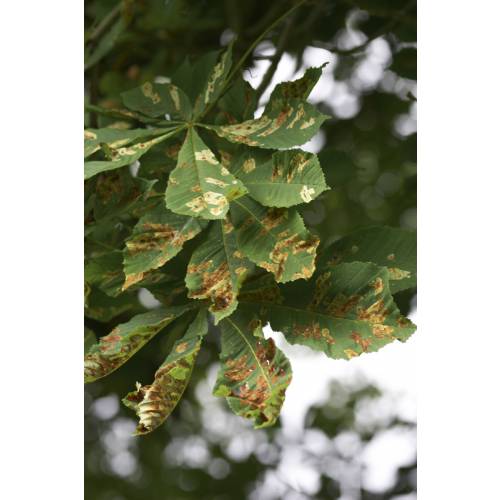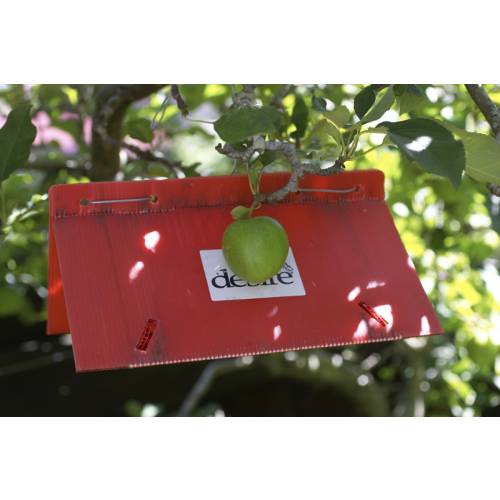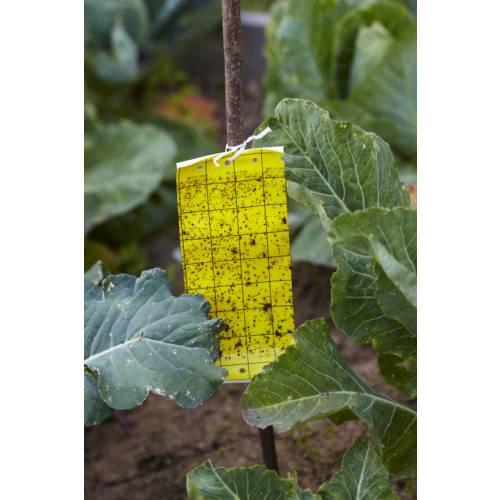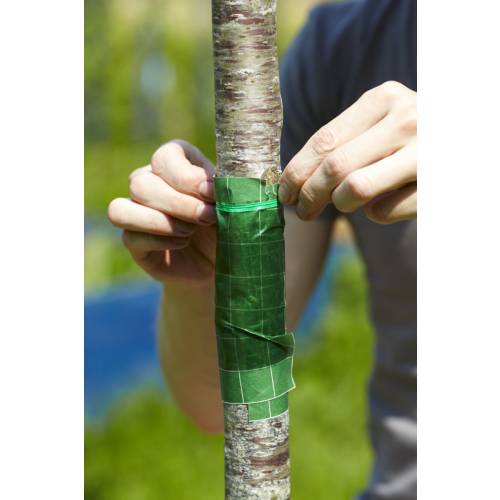
Parasites and insects
Insect traps to protect your plants
- Details
-
Among the biological methods available, the use of traps offers a 100% protection whilst remaining respectful of the environment!
A love trap
Among many insects, the males seek out the females of the species by locating particular substances, namely pheromones, which diffuse through the air. These odors are different for each particular species. It is therefore possible to attract the males of any given species by using these pheromones. Now it turns out that this method of location is especially used by the most devastating pests in the garden: the fruit flies (carpocapse), the horse chestnut leaf miner, the pine caterpillar and the olive fly in particular.
Now that we know how to reproduce these pheromones, we can build traps that are both ecological and efficient. These pheromone traps are in the form of little suspended shelters that contain a sticky paper inside. A small bottle inside diffuses the particular pheromone. Attracted by the smell the males gather inside and are stuck to the paper, thus preventing the females from laying their eggs on their favourite plants. These traps do not harm the gardenís helpers and do not affect other insect species.
To each his pheromone
As these substances are very specific, you will need to use different types of trap if you have several types of tree to protect, for example an orchard that has both cherry trees and olive trees. A trap will protect up to five trees of the same type. In other words, a pheromone trap against the grub that infests cherries will protect five cherry trees from attack; however, it will give no protection against the olive fly, which will require the use of another type of pheromone trap. The best time to pose these traps is towards the end of spring. All you need to do is simply hang them on a branch.
Remember to refill them
Pheromones have an inconvenience though: they only last a short time and each year the traps must be refilled, this can end up being quite expensive. A good idea is to share traps with neighbours to protect your trees. Insects ignore boundaries so if the gardens are close one trap can protect several trees in neighbouring gardens !
Colour traps, the most basic of traps
In green houses or confined areas, you can use brightly coloured traps, which are no more than sticky papers that are hung up. In this case, there is no use of odours. It is the colour that attracts certain species of aphids that then get stuck to them. This type of protection is useful in verandas or amongst cabbage plantations when there is a proliferation of white fly, aleyrodidae.
Glue, less efficient
To prevent ants from climbing up fruit trees we have got used to wrapping sticky bands around the trunks, about half way up and about 12 centimetres wide. Although this may protect against ants it does nothing to stop aphids from proliferating as they can colonize a tree by flying to it. Furthermore, these sticky bands trap not only the ants but also the gardenerís friends who were coming specifically to hunt the aphids! - Photos (4)




